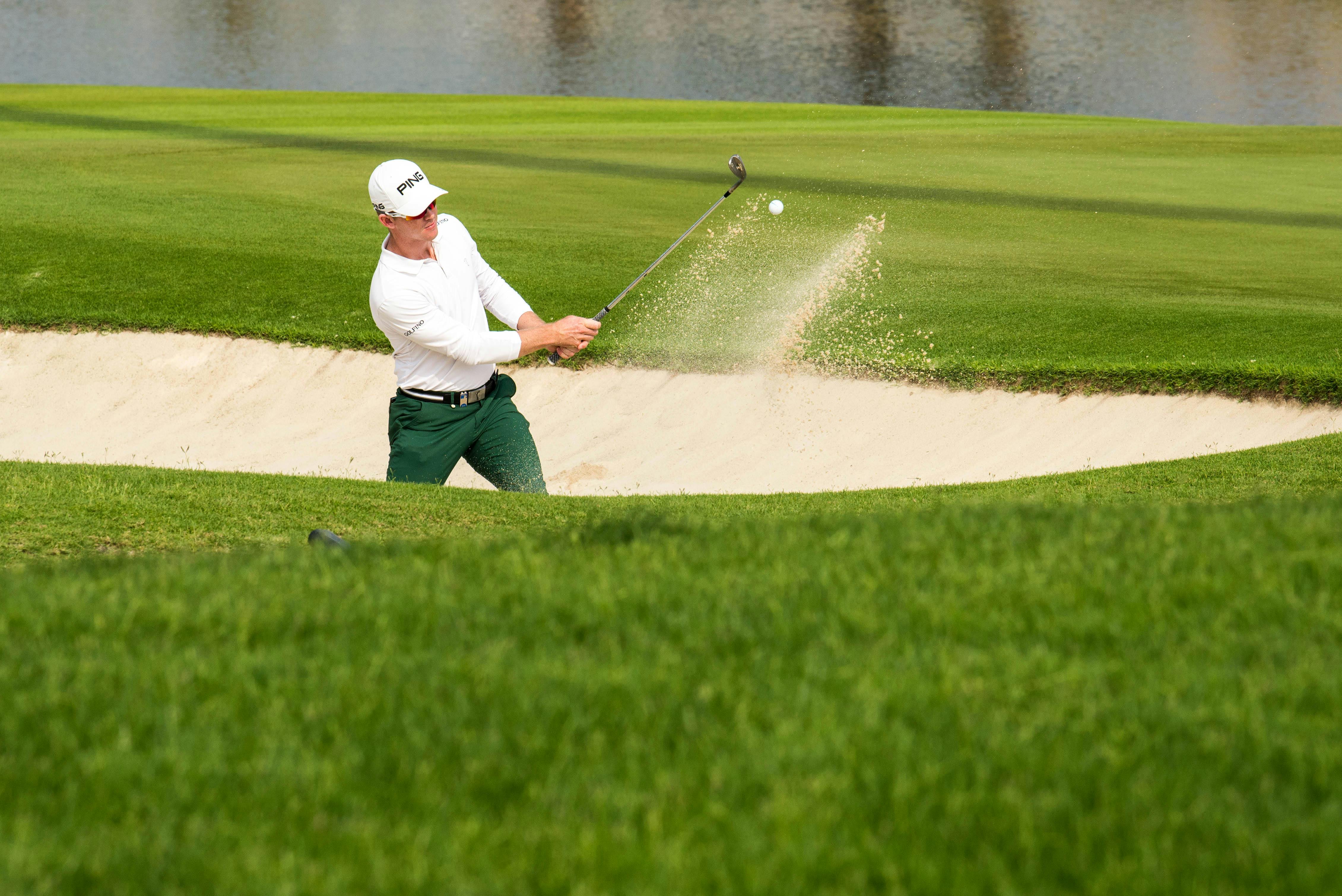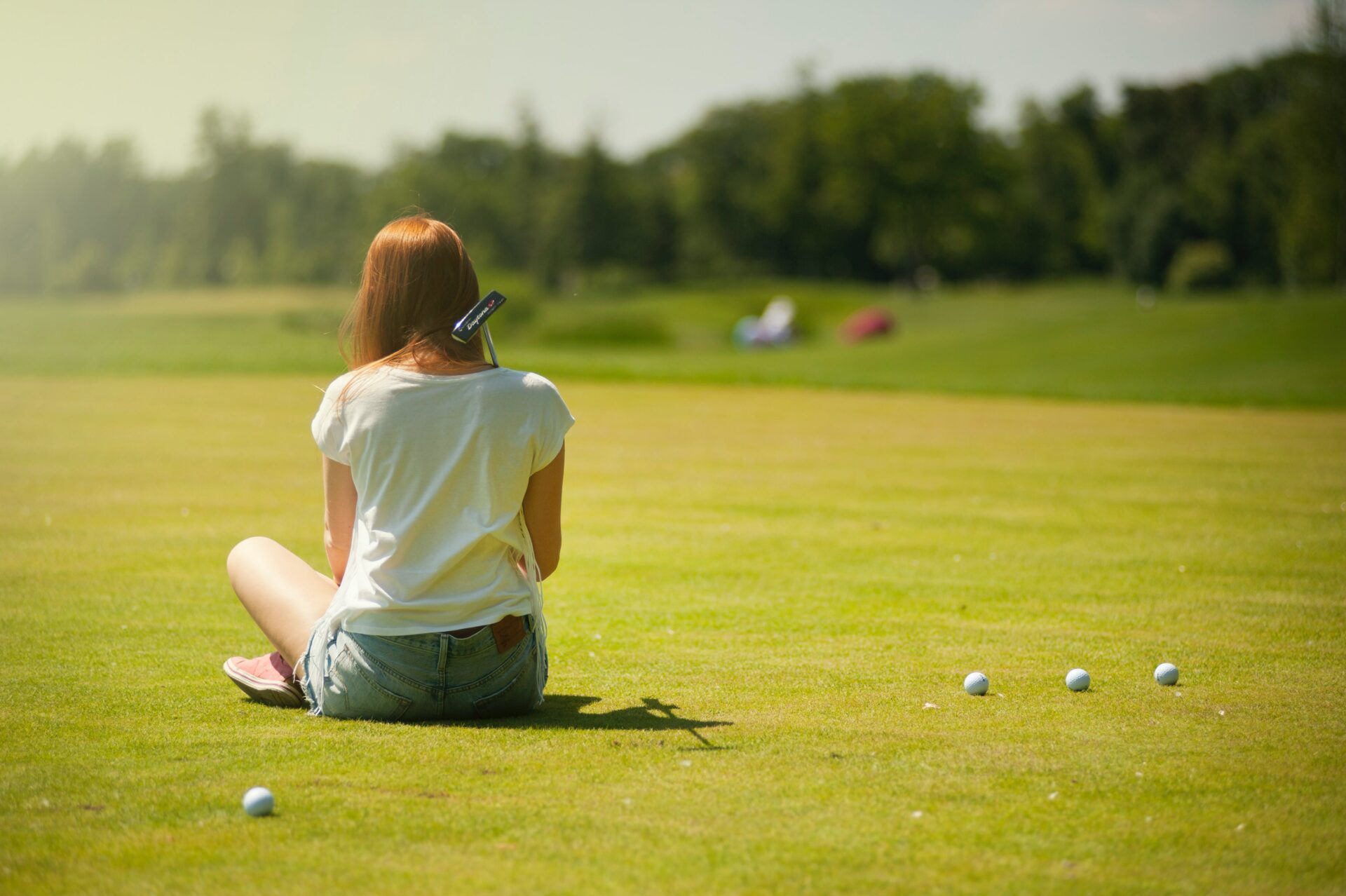Golf balls are one of the most important pieces of equipment for any golfer, and one of the most recognizable features of a golf ball is its dimples. The number of dimples on a golf ball can vary depending on the manufacturer, but typically, a golf ball will have between 300 and 500 dimples. The number and shape of these dimples can affect the spin rate, trajectory, and distance that a golf ball travels. In this article, we will discuss how many dimples are typically found in a golf ball and how they affect the flight of the ball.A standard golf ball has 336 dimples.
What Is The Purpose Of Dimples On A Golf Ball?
Dimples on a golf ball are an essential part of the game. They are used to create drag, or air resistance, which helps to keep the ball in flight for longer periods of time. Dimples also help to reduce the amount of backspin on the ball, enabling it to fly further and straighter. By creating a turbulent air flow around the ball, the dimples disrupt the smooth laminar flow and create an area of low pressure around it. This causes the ball to travel further and with greater accuracy than a smooth ball would.
Dimples also help to reduce side spin, which can cause slices or hooks when hitting the ball off-center. The dimples act as tiny wings that help to keep the golf ball on track and reduce unwanted spin. Additionally, dimples increase lift at lower velocities, allowing players with slower swings to hit longer shots with greater accuracy.
The dimpled design of a golf ball has remained largely unchanged since its invention in 1898 by William Taylor. The revolutionary design has been improved over time by varying the depth and size of dimples, but its purpose remains essentially unchanged: To keep a golf ball in flight for as long as possible while minimizing unwanted spin.
Why Do Golf Balls Have Dimples?
Golf balls have dimples for a variety of reasons. Most importantly, dimples help reduce drag and increase lift, allowing golfers to hit the ball farther and straighter. The dimples on a golf ball create turbulence in the air around it, which helps reduce drag. This turbulence also helps to maintain a layer of air between the golf ball and the air around it, creating lift which will help keep the ball in the air longer.
The dimple pattern on a golf ball also affects its flight trajectory. Dimples can be arranged in different patterns that influence how the ball moves through the air. For example, some patterns are designed to produce more spin while others are designed for more distance.
Dimples also help create spin on a golf ball when it is hit by an iron or wedge club. The dimple pattern creates friction with the club face which causes backspin and helps generate more accuracy when hitting shots into greens and around obstacles like trees.
Finally, dimples help give a golf ball its characteristic shape and durability. Dimple patterns make it easier for manufacturers to mold balls into their desired shape without compromising their durability or performance on the course.
Overall, dimples are an essential part of any golfer’s arsenal and are integral to maximizing distance and accuracy when playing the game of golf.
What Is The Average Number Of Dimples On A Golf Ball?
The average number of dimples on a golf ball is between 300 and 500. Dimples are an essential part of the golf ball’s design, as they reduce the amount of drag that affects the ball as it flies through the air. This helps to make the flight more stable and accurate, increasing distance and accuracy.
The dimples also help with spin, as the grooves on the surface create a cushion of air, giving the golfer greater control over their shots. The size and shape of each dimple can vary from one manufacturer to another, but they’re usually between 0.5-0.9mm in diameter.
Manufacturers use different patterns when designing their golf balls, but it’s generally accepted that there should be around 300-500 dimples per ball. This gives enough surface area for reduced drag and improved spin without making it too hard to hit or reducing accuracy. A golf ball with too few or too many dimples won’t perform as well as one with a more balanced pattern.
The dimple patterns on modern golf balls are very complex, with some featuring more than 500 dimples for maximum performance benefits. It’s important to select the right type of ball for your game depending on your skill level, as certain models are designed to give you greater control over your shots while others are designed for greater distance off the tee.
Overall, most golf balls have between 300-500 dimples which helps create a balanced design that offers both stability and control during flight for improved accuracy and distance off the tee.
What Affect Does The Number Of Dimples Have On A Golf Ball?
The number of dimples on a golf ball has a significant effect on its flight path. Golf balls with fewer dimples will travel farther than those with more dimples because fewer dimples create less drag and turbulence, allowing the ball to travel further. However, the amount of spin and accuracy that can be achieved is reduced with fewer dimples. Golf balls with more dimples will fly shorter distances, but they will spin more and retain accuracy better for a tighter landing area.
A typical golf ball contains between 300-500 dimples, though there are designs with up to 1,000 dimples. The deeper the dimple, the more surface area it has for creating lift. The number of dimples also affects how much air passes over the surface of the ball, which helps to reduce drag and improve stability in flight. The deeper the dimple depth, the better lift and aerodynamics the golf ball has in flight.
The size of the golf ball also affects its performance when it comes to distance and spin. A larger size golf ball allows for greater lift due to its larger surface area while a smaller size golf ball can reduce drag from air resistance due to its smaller surface area.
In conclusion, there is no one right answer when it comes to choosing between golf balls with different numbers of dimples or sizes as it all depends on individual playing style and preference. However, understanding how different numbers or sizes of dimples affect your shot can allow you to make an informed decision that best suits your game.

Does The Number Of Dimples On A Golf Ball Make It Fly Further?
The number of dimples on a golf ball is one of the main factors which determines how far it will fly. The more dimples a golf ball has, the more accurately it is able to travel through the air. This is because dimples create turbulence in the air, which reduces drag and increases the distance that a golf ball can be hit.
When a golf ball is hit with a club, it creates an area of low pressure behind it. This low pressure area pulls the ball forward and causes it to fly further. Dimples on a golf ball help to break up this low pressure area and create turbulence in the air behind it. This turbulence reduces drag and helps to keep the ball flying straight and far.
The number of dimples on a golf ball can range from 300 to 500 depending on the type of golf ball being used. The more dimples there are, the less likely it is for air to flow over the surface of the golf ball, causing turbulence and reducing drag. Different manufacturers have their own preferences when it comes to how many dimples should be on their balls, so some may have fewer than others.
Overall, having more dimples on a golf ball does make it fly further because they reduce drag and provide more accuracy in flight direction when compared to balls with fewer dimples. However, other factors such as club speed, spin rate, and launch angle also play an important role in determining how far a ball will travel after being hit by a club.
How Are The Number Of Dimples On A Golf Ball Decided?
The number of dimples on a golf ball is decided based on a combination of factors including the ball’s size, speed, and spin. Dimples are small indentations on the surface of a golf ball that help reduce drag and increase lift as the ball moves through the air. When a golf ball is hit, it creates turbulent air flow around its surface. The dimples disrupt this air flow, reducing drag and allowing air to flow more evenly along the surface of the ball. This helps to keep the golf ball in flight longer and reduce its total flight distance.
The spacing and depth of the dimples can affect how much lift is generated by the ball when it is hit. If there are too few or too many dimples, it can cause an imbalance in lift which can lead to an inconsistent flight path for the golf ball. Most golf balls have between 300-500 dimples, though some may have more or less depending on their design. Generally, balls with fewer dimples produce less spin while those with more dimples generate more spin which can be beneficial for certain types of shots on the course.
Manufacturers also take into account aerodynamic factors such as air pressure and temperature when designing a golf ball with specific dimple patterns and depths. Testing in wind tunnels helps determine how well a particular dimple pattern will perform under various conditions so that players can optimize their performance with different types of balls.
Overall, there is no single answer to how many dimples should be present on a golf ball – it depends on several variables including size, speed, spin, and environmental conditions. Experienced players may even customize their own balls by varying the number of dimples based upon their own unique needs in order to get better performance out of them on the course.
Different Types of Dimple Patterns on Golf Balls
Golf balls are one of the most important pieces of equipment in a golfer’s arsenal. While they may look like simple round objects, golf balls are engineered with complex dimple patterns that affect their performance. Different types of dimple patterns offer different levels of control, spin, and distance when hit properly.
The most common type of dimple pattern is the traditional 360-dimple pattern, which has been around for many years. This type of dimple pattern offers a good balance between control and distance for most players. The next type is the 432-dimple pattern. This type offers more lift and spin than the 360-dimple pattern, which makes it more suitable for skilled players who need increased control over their shots.
Another popular type is the 384-dimple pattern. This pattern features slightly larger dimples than the 360- and 432-patterns, which gives golfers more distance off the tee. It also offers more backspin on shots that are hit with a higher lofted club, making it easier to stop the ball quickly on approach shots.
Finally, there is the 408-dimple pattern which offers even more lift and spin than its predecessors due to its increased number of small dimples. This type of dimple pattern helps golfers gain extra distance off their drives while still maintaining good control and accuracy on their shots.
Overall, each dimple pattern offers unique benefits depending on your playing style and skill level as a golfer. By understanding what each type can do for you, you can make an informed decision about which one will give you the best performance on the course.

Conclusion
Golf balls come in many different varieties and are designed for a variety of skill levels. Each golf ball has a different number of dimples, but on average, there are 300-500 dimples on a golf ball. It is important to note that the dimple pattern can vary from one manufacturer to another and the number of dimples can also vary. The dimple pattern and number of dimples on a golf ball affects its flight characteristics, so it is important to choose a golf ball with the right combination of dimples for your skill level.
In conclusion, the number of dimples in a golf ball varies, but on average most golf balls have 300-500 dimples. Additionally, the pattern and number of dimples can affect how the ball performs in flight, so it is important to choose the right combination for your game.




